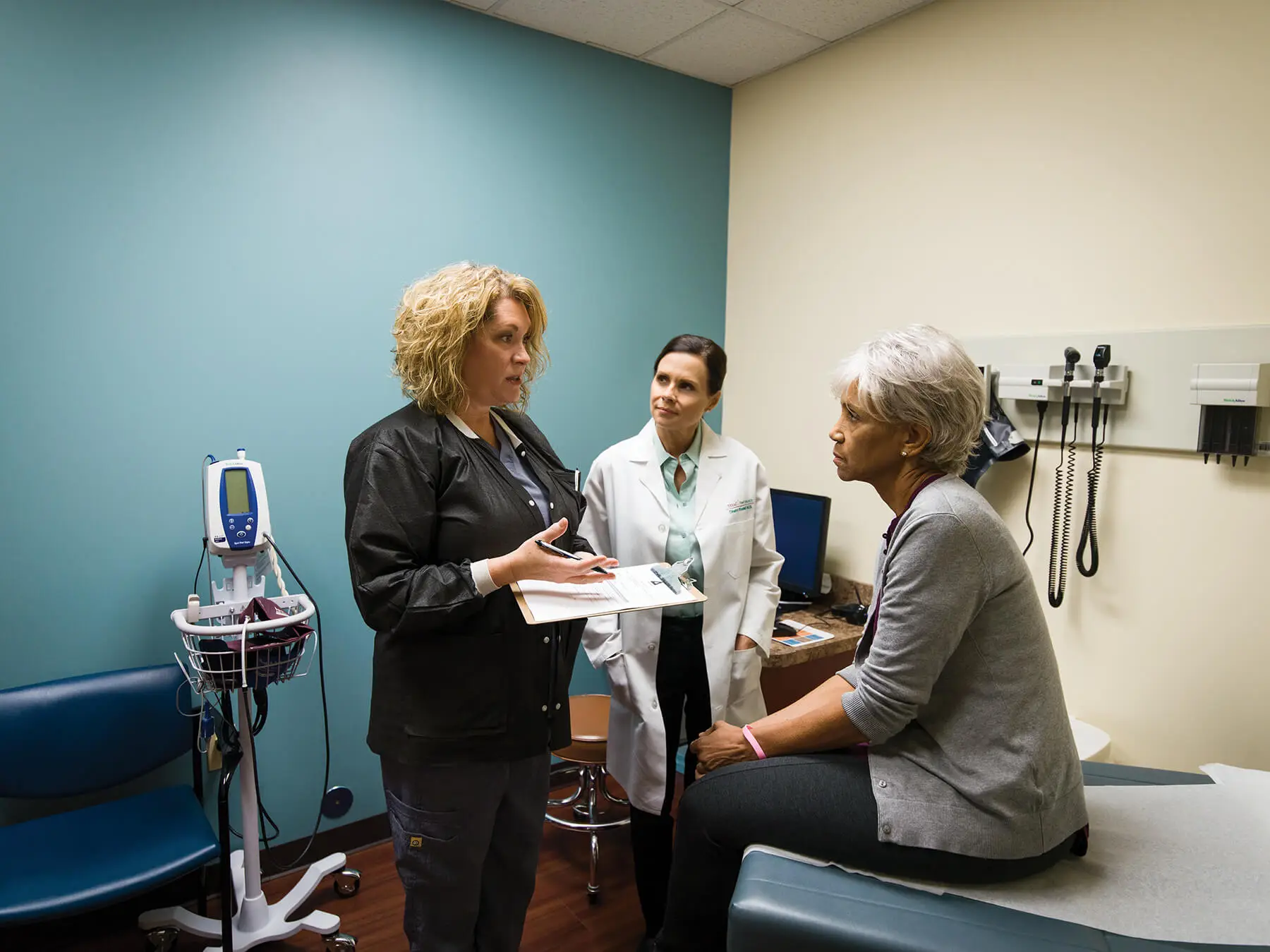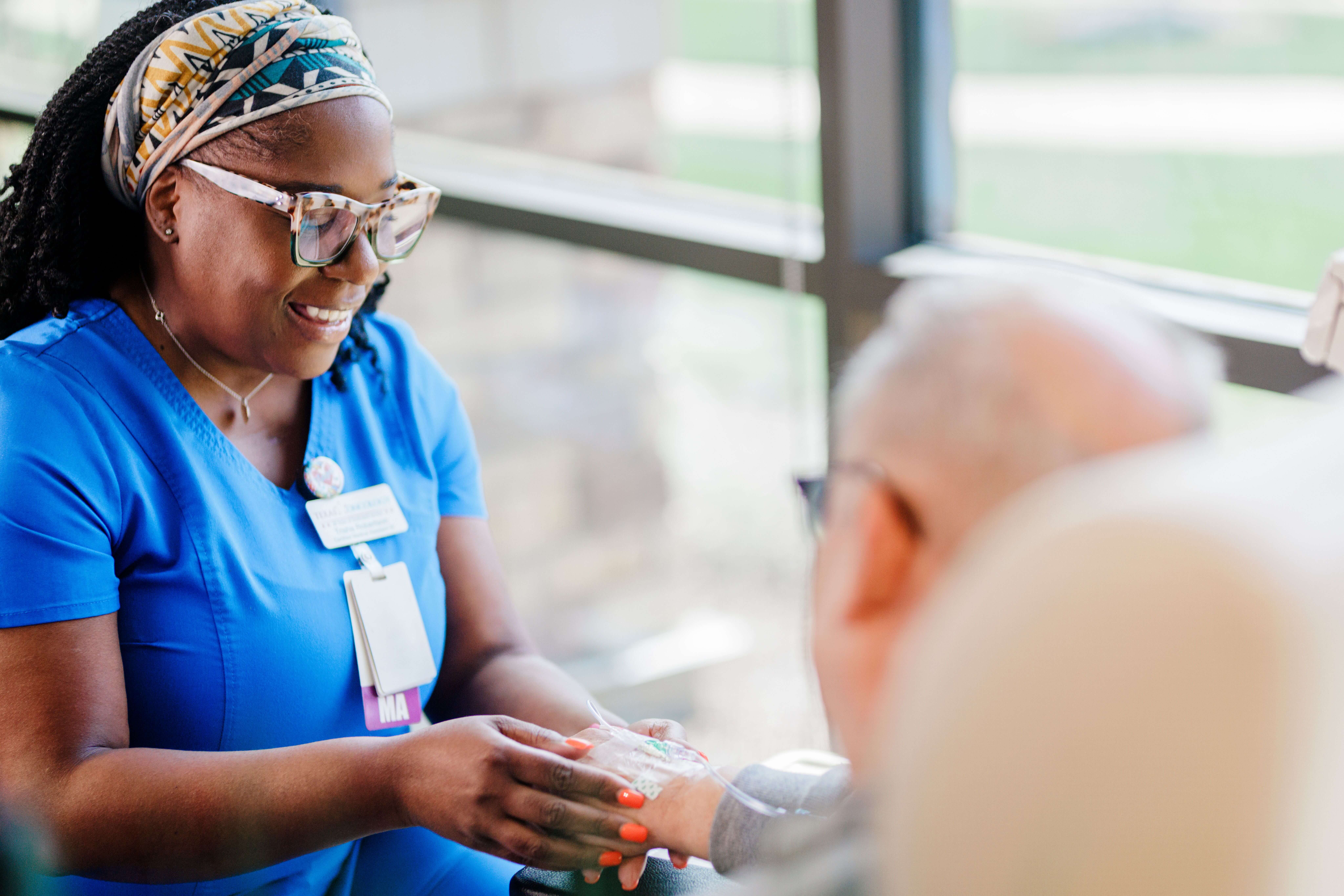« Back to Blog
Collaborative Study Addresses Barriers to Targeted Cancer Treatment for Non-Small Cell Lung Cancer
Tremendous progress has been made over the last decade in the battle against cancer, as many exciting new treatments, including novel targeted therapies, have been developed. Unfortunately, not all patients have equal access to these promising therapies, as obstacles prevent certain patients from obtaining testing necessary to utilize some of these treatments. Financial challenges, access to care, healthcare illiteracy and other complex issues prevent many patients from getting tested. For new advances to reach their full potential, existing inequalities must be recognized and eliminated so all patients who seek care have equal opportunity to receive the best and most targeted therapies.
“Achieving the goal of eliminating cancer, or even turning it into more of a chronic condition, is unlikely to occur without identifying and addressing barriers that affect testing,” explained Sarah Alwardt, PhD, VP of Operations for OntadaTM, an oncology data, research and technology business dedicated to improving the lives of cancer patients. “We know inequalities exist that prevent certain patients from receiving testing and optimal treatments, but so far, little effort has been made to identify these obstacles so we can find ways to eliminate them.”
Unique collaboration brings the industry together to investigate testing barriers
A five-year real-world evidence study of 12,000 non-small cell lung cancer (NSCLC) patients is tackling the problem of identifying barriers to testing, in the hopes of developing practical strategies to overcome those obstacles. While the study focuses on NSCLC, the results may be helpful in dealing with other cancers linked to mutations. The MYLUNG ConsortiumTM brings together The US Oncology Network, US Oncology Research and Ontada with several industry stakeholders including providers, life sciences companies and patient advocacy groups.
“The MYLUNG Consortium is a one-of-a-kind initiative, and we are proud to work alongside patient advocates, providers, the research community and other industry collaborators to achieve our common goal of personalizing and improving care for people with lung cancer,” said Jamie Freedman, MD, PhD, head of U.S. Medical Affairs at Genentech. “Through these collective, patient-centered efforts, we are helping identify barriers and evaluate solutions to optimal care – particularly to biomarker testing – to create a future where every patient with non-small cell lung cancer can access medicines that are precisely right for them.”
Testing is one of the most fundamental components of improving care for patients with NSCLC because the disease is defined by a number of specific treatable molecular alterations. While each participating entity plays a distinct role in the care continuum for cancer patients, we are united in recognizing the rate of testing is insufficient to optimize outcomes.
“The MYLUNG Consortium is an opportunity for Lilly Oncology and others working in precision oncology to come together to ensure people with advanced non-small cell lung cancer get timely access to high-quality and broad-based genomic profiling,” noted David Hyman, MD, chief medical officer, oncology at Lilly. “Identifying actionable oncogenic drivers is key to the optimal care for these patients, especially those with rarer mutations found through comprehensive next generation sequencing.”
“The identification of patients who would derive the most benefit from our medicines is a key focus of AstraZeneca’s commitment to precision medicine,” added Camille Hertzka, vice president, Head of Medical Affairs, U.S. Oncology at AstraZeneca. “We are confident that the MYLUNG Consortium will help us realize our ambition to provide the best available treatment for every patient and ultimately transform patient outcomes.”
Participating organizations are putting patients first, above their brands, to focus on understanding testing and treatment patterns, with the goal of identifying practical solutions that improve patient access to precision medicines.
“This collaboration is extremely exciting, as everyone is using resources and strategies they have leveraged in the past to implement prospectively to see what is most effective in increasing testing rates,” said Robert L. Coleman, MD, FACOG, FACS, chief scientific officer, US Oncology Research. “We need a greater understanding of the barriers and opportunities around targeted therapies to fulfill the promise of precision medicine. Insights from the MYLUNG Consortium may eventually lead to better, more timely therapy, not just for lung cancer, but for other cancers that have driver mutations.”
Patient advocacy groups are also playing a key role in the study, according to Alwardt, by keeping the patient at the center of all conversations. This patient-centric focus aligns participants so they are united in trying to figure out what is best for the patients they all serve directly or indirectly.
“One of GO2 Foundation for Lung Cancer’s key goals is ensuring every person diagnosed with lung cancer has access to comprehensive biomarker testing, no matter where they live,” explained Jennifer C. King, PhD, chief scientific officer of the organization. “We are pleased to be part of the MYLUNG Consortium as it will inform us on important best practices that can be implemented in community settings to facilitate precision medicine for everyone.”
Early findings identify gaps
The MYLUNG Consortium consists of three protocols: the first part reviews electronic health records of patients, examining data on testing and identifying historical barriers to testing; the next part will monitor the patient’s treatment through their first line of cancer therapy, focusing on how testing information is obtained and utilized for decision-making; and the final part will launch interventional strategies based on data from the first two phases.
The early results are in for the first part of the study, and the findings show key areas for improvement:
- Only 80% of the population received some tests. This is a disease in which all patients should be tested, so this is a critical gap that needs to be closed.
- A large portion of patients received testing after treatment decisions were made, highlighting the importance of turnaround times.
- Only 50% of patients received next generation sequencing (NGS), the full gamut of tumor testing that lets physicians know specifically what alteration their patient’s tumor has. This is disappointingly low, demonstrating not all patients had the opportunity to get the best therapy available.
“The low percentage of NGS testing is concerning,” said Dr. Coleman, “as NGS is an extremely valuable and efficient tool for determining the most effective targeted therapy for a patient.” Testing between four and 600 different genes at once, inclusive of all types of genomic alterations that can occur, NGS reveals if something went wrong in one of them. In simple terms, Dr. Coleman explained, “NGS looks into a tumor with a microscope to identify what types of things have been turned on or off, much like a light switch, that make the cell do cancerous things, such as grow unchecked.”
Lung cancer has been increasingly subdivided into smaller and smaller subgroups defined by driver mutations, which are basically light switches being turned on when they should be off. There are mutations in many cancers, but they may not be drivers solely responsible for turning on the light bulb. Consequently, when the driver mutationꟷthe actual light switch that turns off the lightꟷcan be found, there may be an opportunity for a targeted intervention.
“If you are skipping NGS testing and not looking for the light switch, you are basically treating patients without much information,” said Dr. Coleman. “What is so exciting is that now because we have many drugs that hit a specific target and turn off that light switch, we have an opportunity to improve care.”
In lung cancer, for instance, NGS found certain mutations in the EGFR gene that drive cancer, so now there are drugs targeting that specific mutation. Thanks to NGS, life sciences companies are developing promising new treatments for patients who just a few short years ago had little hope.
“Approximately half of all patients with non-small cell lung cancer have identifiable oncogene biomarkers, yet despite the integral role that biomarkers play to identify lung cancer who may benefit from targeted therapies, many patients are not tested,” said Darryl Sleep, MD, chief medical officer and senior vice president of Global Medical at Amgen. “Amgen supports working with all stakeholders—healthcare providers, advocacy organizations and industry through the MYLUNG Consortium—to increase molecular testing rates. Based on a patient’s biomarker status, clinicians and patients can make informed decisions on tailored treatment plans that include targeted therapies which have significantly improved the prognosis for many patients.”
“With two new targeted therapy approvals in May, the need for comprehensive biomarker testing has only been amplified,” said Andrea Ferris, president and CEO of LUNGevity. “LUNGevity Foundation firmly believes that every patient diagnosed with NSCLC should have access to high-quality testing and treatments, and invests in programs and resources to remove barriers to access. We are delighted to see that efforts such as the MYLUNG Consortium will continue to push the needle to make precision medicine a reality for patients who are not treated at large, academic centers.”
Education will help close the gaps
Education will play a key role in the development of future interventional strategies that will be tested in the last phase of the MYLUNG Consortium, according to Alwardt. To maximize testing, Alwardt said, “physicians must understand who and when to test, how to get the tests, and importantly, how to interpret the results, which should be incorporated in the physician workflow.”
Equally importantꟷespecially from the patient advocacy point of viewꟷis patient education to make sure patients know they should be asking for testing. Because disparities in healthcare literacy exist, there is a whole other level of educational needs related to helping patients understand the disease and its treatments.
“We are pleased to be collaborating with the MYLUNG Consortium to better understand and improve the experience for patients living with lung cancer,” said Joseph Leveque, MD, executive VP and chief medical officer at Mirati Therapeutics, Inc. “As a targeted oncology company with a significant focus on lung cancer, we recognize and appreciate the need to ensure patients have the knowledge and access to the tools necessary to optimize their experience with often complex cancer treatment decisions.”
MYLUNG will fuel more research in the future
Even though the MYLUNG Consortium is a five-year project, there will still be many issues to address about healthcare disparities when the study concludes. According to Alwardt, results from the MYLUNG Consortium will provide a wealth of real-world evidence that will drive further research for years to come. Real-world studies using pragmatic trial designs like the MYLUNG Consortium are where the questions about testing disparities will be answered, she believes, and there is much work yet to be done.
Alwardt concludes, “Many treatments in NSCLC hold incredible promise, but their potential will only be reached if we find the right patients who will benefit the most from them. Identifying and eliminating the obstacles that prevent equal access to testing is the first step forward, and this will likely be an ongoing area of investigation for many years to come.”

